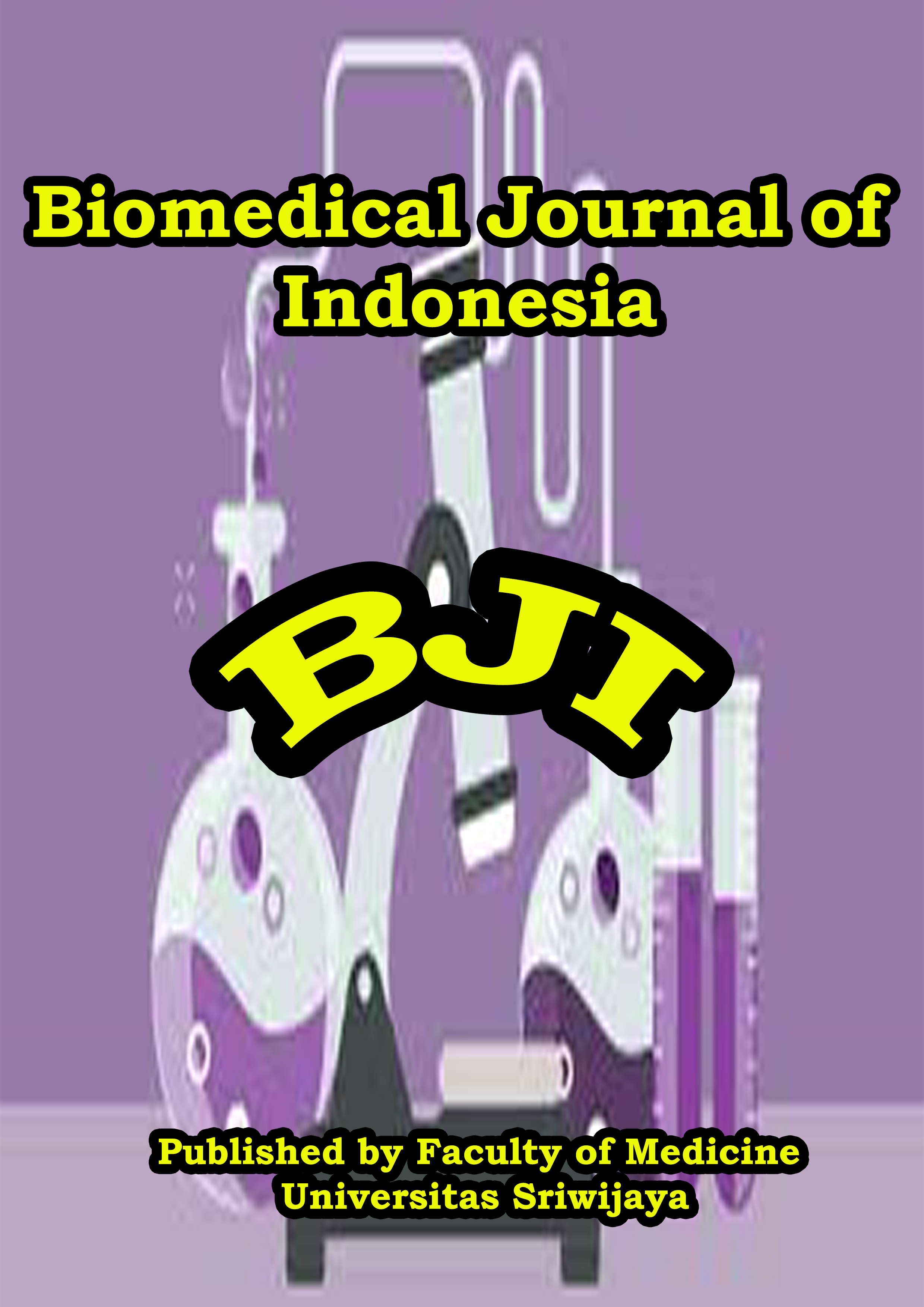Anti-Inflammatory and Anti-Hyperuricemic Effects of Chrysin in a Rat Model of High Fructose Corn Syrup Induced Hyperuricemia
Main Article Content
An increase in the blood level of uric acid, or hyperuricemia, is a disorder that can cause damage to the kidneys and gout among other health problems. Worldwide, the incidence of hyperuricemia has been rising, in part because of dietary factors such the use of HFCS, a prevalent sweetener found in processed foods. Thus, research into natural substances with anti-inflammatory and anti-hyperuricemia attributes, such as chrysin, is critical to the fields of therapeutic and preventive medicine. This study investigates the anti-inflammatory and anti-hyperuricemic effects of chrysin in a rat model of hyperuricemia induced by high-fructose corn syrup. The research reveals that chrysin exerts its therapeutic effects through antioxidant activity and the inhibition of inflammatory signaling pathways, resulting in a decrease in oxidative stress and the expression of the pro-inflammatory cytokine IL-1β. Treatment with chrysin leads to a significant increase in tissue weight, tissue index, and kidney histology, indicating its potential in mitigating kidney damage associated with hyperuricemia. The study demonstrates a dose-dependent reduction in IL-1β levels and inflammation activation with chrysin treatment, surpassing the anti-inflammatory effects of the comparison group. Furthermore, chrysin treatment reduces malondialdehyde concentration and mitigates the activation of inflammasome-related protein induced by high-fructose corn syrup. These findings highlight the promising therapeutic potential of chrysin in managing hyperuricemia and related metabolic disorders.
2. Juraschek SP, Kovell LC, Miller III ER, Gelber AC. Association of kidney disease with prevalent gout in the United States in 1988–1994 and 2007–2010. Semin Arthritis Rheum. 2013; 42: 551–561.
3. Mandal AK, Mount DB. The Molecular Physiology of Uric Acid Homeostasis. Annu Rev Physiol. 2015; 77: 323–345.
4. Islam MS, Ciavattini A, Petraglia F, Castellucci M, Ciarmela P. Extracellular matrix in uterine leiomyoma pathogenesis: A potential target for future therapeutics. Hum Reprod Update. 2017; 24: 59–85.
5. Tan J, Wan L, Chen X, Li X, Hao X, Li J, Ding H. Conjugated Linoleic Acid Ameliorates High Fructose-Induced Hyperuricemia and Renal Inflflammation in Rats via NLRP3 Inflflammasome and TLR4 Signaling Pathway. Mol Nutr Food Res. 2019; 63: e1801402.
6. Ziga N, Becic F. Allopurinol Effect on Values of Lipid Profile Fractions in Hyperuricemic Patients Diagnosed with Metabolic Syndrome. Mater Socio Med. 2013; 25: 167–169.
7. Mani R, Natesan V. Chrysin: Sources, beneficial pharmacological activities, and molecular mechanism of action. Phytochemistry 2018; 145: 187–196.
8. Zhang C, Li L, Zhang Y, Zeng C. Recent advances in fructose intake and risk of hyperuricemia. Biomedicine & Pharmacotherapy. 2020 Nov;131: 110795.
9. Sultana S, Verma K, Khan R. Nephroprotective efficacy of chrysin against cisplatin-induced toxicity via attenuation of oxidative stress. J. Pharm Pharmacol. 2012; 64: 872–881.
10. Ali BH, Al Za’abi M, Adham SA, Yasin J, Nemmar A, Schupp N. Therapeutic Effect of Chrysin on Adenine-Induced Chronic Kidney Disease in Rats. Cell Physiol Biochem. 2016; 38: 248–257.
11. Chang YH, Chiang YF, Chen HY, Huang YJ, Wang KL, Hong YH, Ali M, Shieh TM, Hsia SM. Anti-inflammatory and anti-hyperuricemic effects of chrysin on a high fructose corn syrup-induced hyperuricemia rat model via the amelioration of urate transporters and inhibition of NLRP3 inflammasome signaling pathway. Antioxidants. 2021; 10(4): 564.
12. Meng Z, Yan Y, Tang Z, Guo C, Li N, Huang W, Ding G, Wang Z, Xiao W, Yang Z. Anti-Hyperuricemic and Nephroprotective Effects of Rhein in Hyperuricemic Mice. Planta Med. 2015; 81: 279–285.
13. Kretowicz M, Johnson RJ, Ishimoto T, Nakagawa T, Manitius J. The Impact of Fructose on Renal Function and Blood Pressure. Int J Nephrol. 2011; 2011(1): 315879.
14. Jung SW, Kim SM, Kim YG, Lee SH, Moon JY. Uric acid and inflammation in kidney disease. Am J Physiol-Renal Physiol. 2020; 318(6): F1327-40.
15. Chen G, Tan ML, Li KK, Leung PC, Ko CH. Green tea polyphenols decrease uric acid level through xanthine oxidase and renal urate transporters in hyperuricemic mice. J. Ethnopharmacol. 2015; 175: 14–20.
16. Lu C, Tang S, Han J, Fan S, Huang Y, Zhang Z, Zhou J, Ming T, Li Y, Su X. Apostichopus japonicus Oligopeptide Induced Heterogeneity in the Gastrointestinal Tract Microbiota and Alleviated Hyperuricemia in a Microbiota-Dependent Manner. Mol Nutr Food Res. 2021; 65(14): e2100147
17. Arakawa H, Amezawa N, Kawakatsu Y, Tamai I. Renal Reabsorptive Transport of Uric Acid Precursor Xanthine by URAT1 and GLUT9. Biol Pharm Bull. 2020; 43: 1792–1798.
18. Aslan C, Aslankoc R, Ozmen O, Suluk BN, Kavrik O, Gumral N. Protective effect of vitamin D on learning and memory impairment in rats induced by high fructose corn syrup. Behavioural Brain Research. 2023.
19. Su HY, Yang C, Liang D, Liu HF. Research Advances in the Mechanisms of Hyperuricemia-Induced Renal Injury. BioMed Res Int. 2020; 2020: 5817348.
20. Xiao J, Zhang XL, Fu C, Han R, Chen W, Lu Y, Ye Z. Soluble uric acid increases NALP3 inflammasome and interleukin-1β expression in human primary renal proximal tubule epithelial cells through the Toll-like receptor 4-mediated pathway. Int J Mol Med. 2015; 35: 1347–1354.
21. Liao T, Ding L, Wu P, Zhang L, Li X, Xu B, Zhang H, Ma Z, Xiao Y, Wang P. Chrysin Attenuates the NLRP3 Inflammasome Cascade to Reduce Synovitis and Pain in KOA Rats. Drug Des Devel Ther. 2020; 14: 3015–3027.

